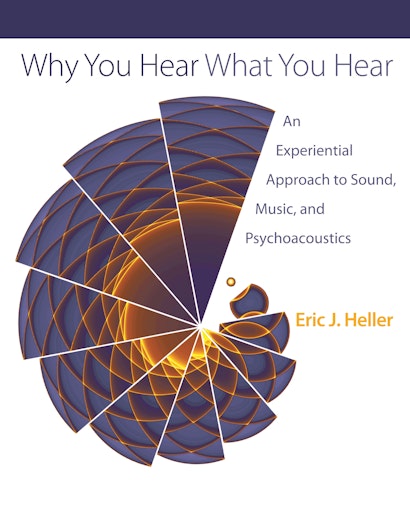Why You Hear What You Hear is the first book on the physics of sound for the nonspecialist to empower readers with a hands-on, ears-open approach that includes production, analysis, and perception of sound. The book makes possible a deep intuitive understanding of many aspects of sound, as opposed to the usual approach of mere description. This goal is aided by hundreds of original illustrations and examples, many of which the reader can reproduce and adjust using the same tools used by the author (e.g., very accessible applets for PC and Mac, and interactive web-based examples, simulations, and analysis tools that can be found on the book’s website: whyyouhearwhatyouhear.com). Readers are positioned to build intuition by participating in discovery.
This truly progressive introduction to sound engages and informs amateur and professional musicians, performers, teachers, sound engineers, students of many stripes, and indeed anyone interested in the auditory world. The book does not hesitate to follow entertaining and sometimes controversial side trips into the history and world of acoustics, reinforcing key concepts. You will discover how musical instruments really work, how pitch is perceived, and how sound can be amplified with no external power source.
Sound is key to our lives, and is the most accessible portal to the vibratory universe. This book takes you there.
- The first book on sound to offer interactive tools, building conceptual understanding via an experiential approach
- Supplementary website (http://www.whyyouhearwhatyouhear.com) provides Java, MAX, and other free, multiplatform, interactive graphical and sound applets
- Extensive selection of original exercises available on the web with solutions
- Nearly 400 full-color illustrations, many of simulations that students can do
"Why You Hear What You Hear . . . has much to interest physicists and physics students. . . . This book contains a lot of physical insight, and I think it will be the rare acoustician who does not enjoy reading it. I particularly liked the use of color coding to introduce (with a minimum of math) a graphical algorithm to represent autocorrelation. Also interesting are the author's diversions into history, including a story in which John William Strutt (Lord Rayleigh) and William Henry Bragg seem to have been mistaken about an echo transposed in pitch. . . . Acousticians will enjoy its interesting perspectives, and physicists and engineers outside of acoustics will find it an attractive introduction to some important parts of the discipline."—Joe Wolfe, Physics Today
"This book contains a lot of physical insight, and I think it will be the rare acoustician who does not enjoy reading it. . . . Acousticians will enjoy its interesting perspectives, and physicists and engineers outside of acoustics will find it an attractive introduction to some important parts of the discipline."—Joe Wolfe, Acoustics Australia
"This book by a distinguished professor of chemistry and physics at Harvard is a joy to read. . . . I highly recommend this as a book to be read, preferably with the book's website on a computer nearby for easy and frequent reference."—Thomas D. Rossing, Journal of the Acoustical Society of America
"This book is highly instructive for people with an interest in the wave aspects of sound, for anyone interested in how musical instruments fundamentally work and why they sound how they sound, and for those interested in the human perception of sound. It is richly illustrated in full color, printed on high-quality paper and at an excellent standard of bookmaking. It deserves a clear recommendation for a wide readership."—Manuel Vogel, Contemporary Physics
"Rich in explanations and do-it-yourself activities, and assuming only a high school background, this is the best text I know on how sound actually works. But what makes this book truly a treasure is the degree to which it is so fully informed by Heller's particular scientific genius: he shows by example after example how to think through complex and nonlinear systems to capture their essential features, leading to deep, novel, and practically applicable insights."—David Politzer, Nobel Laureate in Physics
"This delightful book is written for a wide-ranging audience with diverse interests and musical/acoustical backgrounds. With detailed and physically intuitive discussions, interesting historical information, richly illustrated figures, exemplary sound files, and interactive computer animations (via whyyouhearwhatyouhear.com), this textbook covers an abundance of acoustical physics topics associated with the generation of sound, sound propagation, music, musical instruments, human perception of sound, room acoustics, and much more."—Steven Errede, University of Illinois, Urbana-Champaign
"Covering a massive amount of material, this sweeping book contains sophisticated concepts and an immense amount of information, and includes topics left out in other books on the same subject. Singular and unique, it has no worthy competitors."—William Bickel, University of Arizona
"This book—with its accessibility and breadth of scholarship—is an impressive work that I would recommend highly. This is a fantastic addition to the subject."—Paulo Bedaque, University of Maryland

